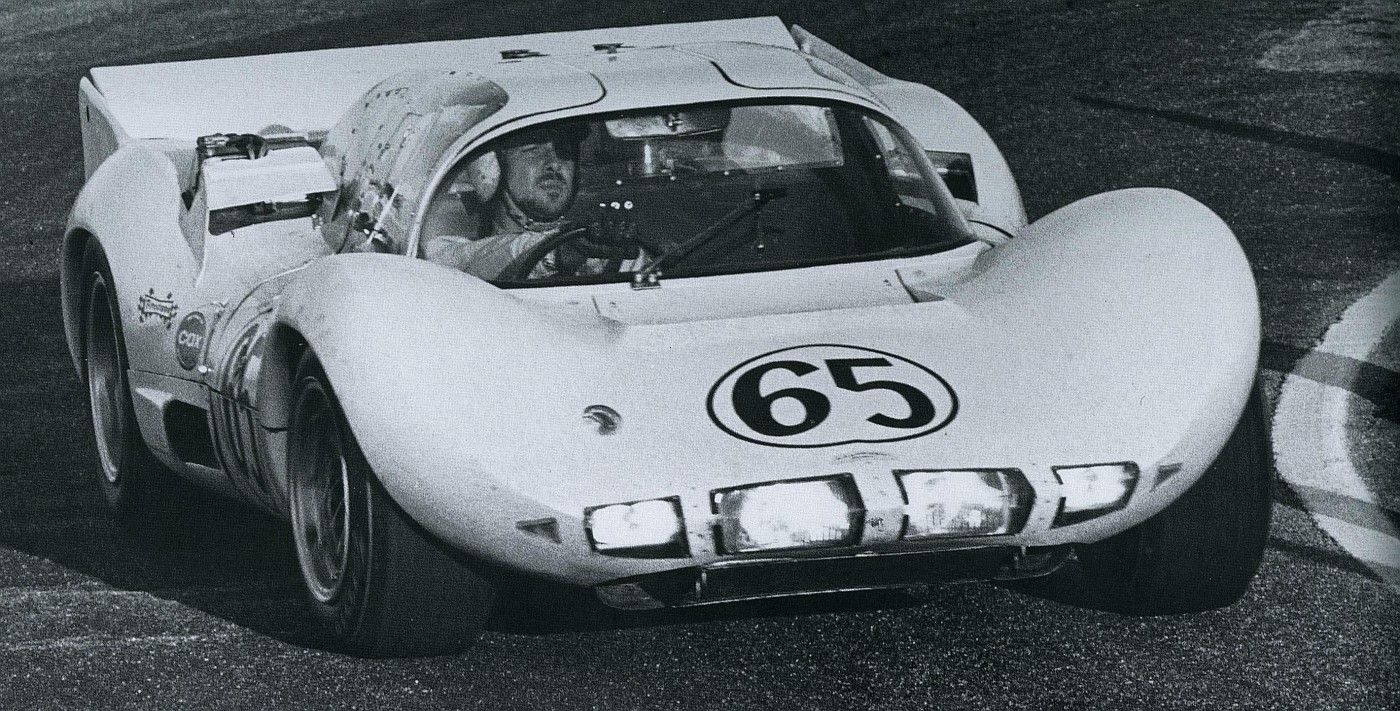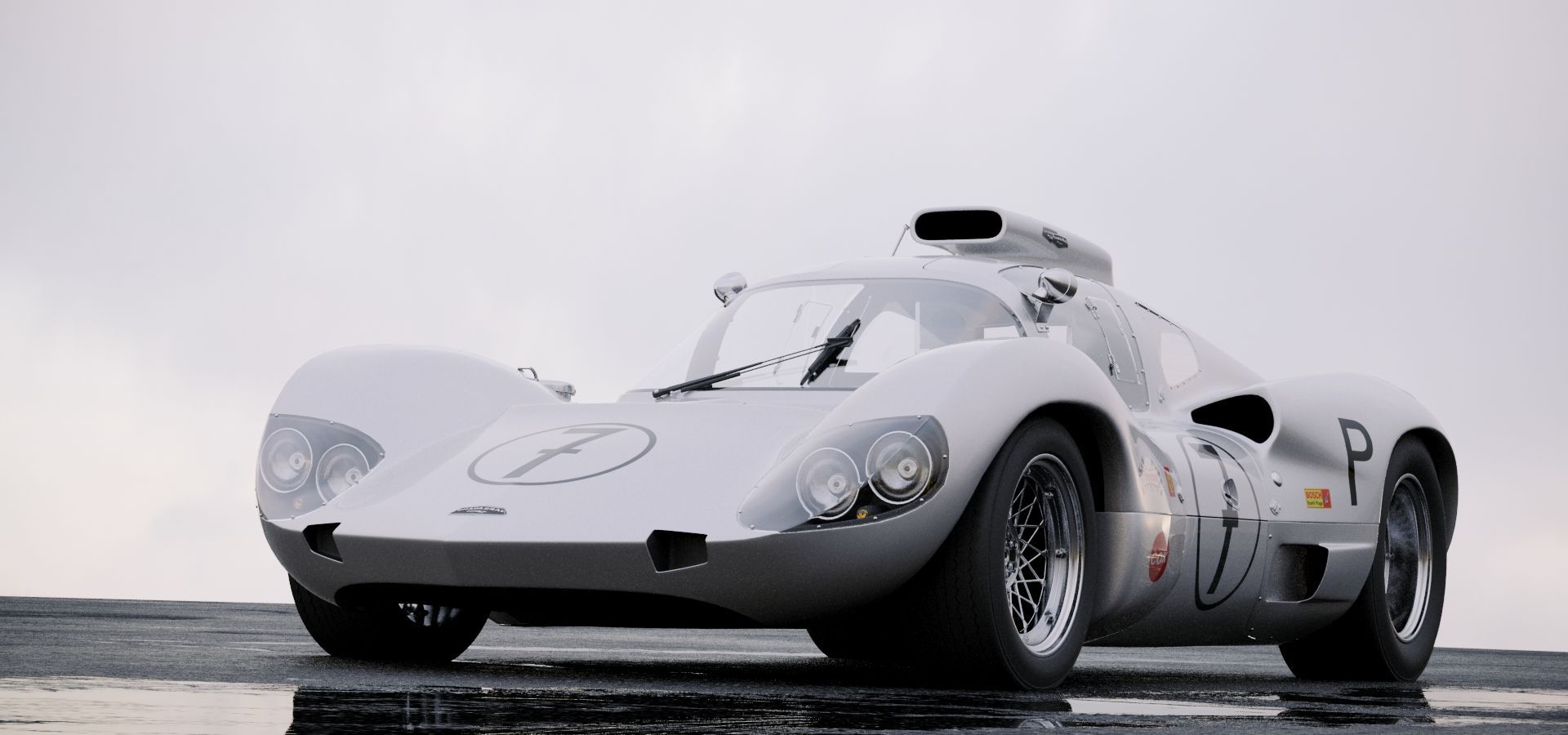Back in the 60s, an American racing company called the Chaparral Cars took the global motorsports industry by storm. It was founded by two inspired racers, Jim Hall and Hap Sharp in the year 1962. Fun fact: the first Chaparral 1 race car was built by Tom Barnes and Dick Troutman which Jim Hall had raced. Later, Hall and Sharp decided to start a company with the same name and as a tribute, all the Hall/Sharp cars' names start with 2. Interestingly, the name was picked from the Roadrunner bird which is also known as Chaparral. Chaparral Cars have since carved a special chapter in the history books for their unique designs, exceptional abilities, aerodynamic designs, and numerous race wins.
Chaparral was a different world altogether. Their team was a group of passionate and dedicated people who had original ideas. However, they wanted to do things differently. The Chaparral team led by brilliant Jim Hall did extensive experiments and testing programs to build some of the craziest but stylish and powerful racing cars. Chaparral Cars was a literal embodiment of ambition, innovation, and dreams. It was the first company to introduce aerodynamics to race cars. The company engineered and raced cars from 1963 to 1970 after which they went defunct. The 2D race car was specially designed for endurance racing and was launched in 1966. It might sound weird but the Chaparral 2D was the first model to have a closed cockpit out of the entire 2 series. According to Drive Tribe, the Chaparral 2D revolutionized the racing world.
The first closed cockpit Chaparral car, 2D might just be the most beautiful race car of all time. It is fondly remembered for its gorgeous curves, unusual design, and the famous 1966 Nürburgring victory.
A blast from the past, Chaparral 2D was flamboyant and way ahead of its time. Scroll through the end for a detailed look back at this iconic race car.
History And Origin Story Of The Chaparral 2D
Chaparral 2D is one of the most stylish race cars in the world. Race enthusiasts still dig this car for its sleek design, curvy looks, and monstrous power. In 1966, Chaparral decided to venture out into international endurance racing too, along with the North American motorsports, and this was how the idea of 2D was conceived. Since its conception, it went on to change the entire racing world.
2D was officially an enclosed version of the Chaparral 2. It was manufactured to compete in the World Manufacturers’ Championship Races, for example, Daytona, 24 Hours of Le Mans in France, Sebring, etc. 2D had made its first appearance in the famous ADAC Nürburgring event and nailed it in a single stroke. After a titillating toe-to-toe chase with the Ferrari Dino, Chaparral 2D won the most difficult endurance race of the world, the 621.3 miles (1,000 km) race of Nürburgring, Germany in its debut year, 1966. Apart from Nürburgring, it had also participated in the 1966 24 Hours of Le Mans. The race car holds a significant contribution to the success of Chaparral too, as it was the first-ever vehicle to introduce and shape the modern automatic gearbox, active aerodynamic designs, aluminum engine blocks, lightweight composite wheels, and much more.
Features And Specifications Of The Chaparral 2D
The Chaparral 2D was built with semi-monocoque fiberglass, and steel reinforcements which facilitated a considerably lighter weight of about 2038 pounds as well as an extraordinary strength. Fiberglass structure also made it easier to modify the car. 2D has played a much bigger role than just winning a race or a Championship. In a way, it also helped the company to translate their experiments into reality on the later models. Most of the aerodynamic and airflow manipulating designs seen on the Chaparral models were tested in 2D first. For instance, a series of surface shapes had been tested on the 2D so that it could take maximum advantage of the airflow and in turn, increase the top speed on high-speed circuits.
The 2D was based on the 2A race car. However, the body was modified heavily since 2A did not comply with the FIA/CSI Group 6 Sports prototype regulations. In addition to a completely reconfigured body design, an entirely new set of features were added too, like an extra spare tire, new headlights, taillights, turn signals, etc. The biggest and probably the most impactful modification was done with the roof. The open cockpit of the 2A was covered to meet the windshield surface area mandate of the FIA, and thus the first-ever closed cockpit Chaparral came into existence. Even though the Chaparral 2D had received a host of brand new specs and design, the major components were carryovers from the earlier model 2A. The 5.3-liter naturally aspirated Chevrolet 327 cubic inch aluminum V8 engine and race-tuned suspension were all borrowed from 2A to 2D. However, the engine was mated with the world’s first-ever six-speed automatic transmission to produce 420 horsepower at 6,500rpm as per the Ultimate Car Page. All of this combined to form the legendary 2D that won Chaparral its first-ever European victory.



